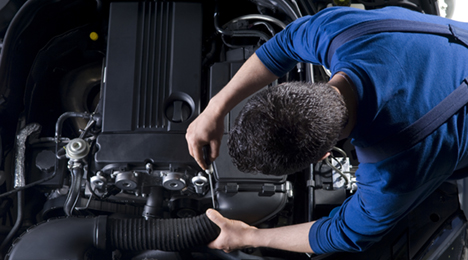New ways to build your fixed ops revenue

By subscribing, you agree to receive communications from Auto Remarketing and our partners in accordance with our Privacy Policy. We may share your information with select partners and sponsors who may contact you about their products and services. You may unsubscribe at any time.
CARY, N.C. –
Earlier this month, Larry H. Miller Dealerships announced a platform to sell car parts online directly to consumers.
This type of play is something IDDS Group chief executive Max Zanan calls “a great move” that more dealers should follow.
Selling parts online allows a dealer to broaden the reach for this part of their business and open a new revenue stream, he said. And it’s also just one of several service strategies successful dealers are employing to compete with independent repair facilities and boost their fixed operations business.
Zanan is the co-founder and chief executive officer of IDDS, which advises dealerships and various auto personnel while also providing F&I products, services and training.
In an interview with Auto Remarketing last week, he said he finds parts and service to be “a tremendous revenue builder” that requires certain fine-tuning to work.
“There are so many different things that a car dealer can do, but first and foremost, they need to concentrate on customer retention. So, the dealers that are extremely successful with parts and service start their process in sales,” Zanan said.
Subscribe to Auto Remarketing to stay informed and stay ahead.
By subscribing, you agree to receive communications from Auto Remarketing and our partners in accordance with our Privacy Policy. We may share your information with select partners and sponsors who may contact you about their products and services. You may unsubscribe at any time.
“When the customer actually buys the car, the dealership sales department introduces the customer to the parts and service department where they physically meet the service manager and the parts manager and the service advisers,” he continued. “And they get accustomed to this new environment.”
Zanan also said that successful dealers often set up a “clinic,” where a new-car buyer comes back to the dealership, say, a couple weeks after his or her purchase. The dealerships goes over a few “basic questions” and helps with some of the learning-curve gadgets in today’s vehicle like navigation and satellite radio.
“By having those clinics, the dealers train their customers into coming back to their facilities,” he said.
Successful dealers in the service lane, he said, also provide the perks when it comes to nice service facilities and waiting areas. That includes business centers and offering everything from loaner cars to manicures.
“What they’re doing is they’re trying to cater to today’s buyer,” Zanan said.
And there are often two misconceptions that today’s buyer might have about taking their car to get serviced at the dealership, he said.
“First, it’s going to be too expensive, and second it’s going to be too inconvenient,” Zanan said.
To combat those perceptions, “the most progressive dealers” offer prices that are competitive to the independent repair facilities and provide services (like the aforementioned loaner cars and business centers) that one might not find at those independent service shops.
Many dealers are also promoting convenience and cost-effectiveness through the Costco Auto Program, which said last week that it saw nearly double the demand for its parts, service and accessories benefit during June.
That’s compared to the daily average recorded by the company from January through May of this year. Costco launched the parts/service/accessories benefit in its auto program in the spring of 2011 to provide a solution for its members who want to maintain and accessorize their vehicles.
The number of dealerships offering the discount has doubled since the program’s inception, while the average daily usage in the first half of 2015 is more than four times larger than that recorded in 2011.
The discount is available nationwide for application to any vehicle in a Costco member’s household at participating Costco Auto Program dealership service departments.
And the “vast majority” of participating Costco Auto dealers are taking advantage of the parts/service program that is offered to members, says executive vice president Rick Borg.
The process is relatively simple: According to the company, the Costco member (i.e. the consumer) goes to CostcoAuto.com to print the benefits coupon. He or she is matched to a certain service center, and calls that center to schedule an appointment and get an estimate. The consumer shows their coupon and Costco membership card when he or she authorizes the service, and receives 15 percent off.
“Aggressive dealers recognize the importance of their service operations (and) fixed ops, in general,” Borg told Auto Remarketing. “Our members’ demand continues to rise, as we market the program more aggressively … like many dealerships, we recognize the importance of driving more business to our participating dealers and their parts and service departments.”
Borg added: “Consumers are holding on to their vehicles. The overall age of the fleet of vehicles is somewhere north of 11 years, 11.5 years.”
Older cars need more maintenance, thus driving demand.
“I think dealerships understand that,” Borg said, “and there are various other factors that are driving more attention to their service drives.”


